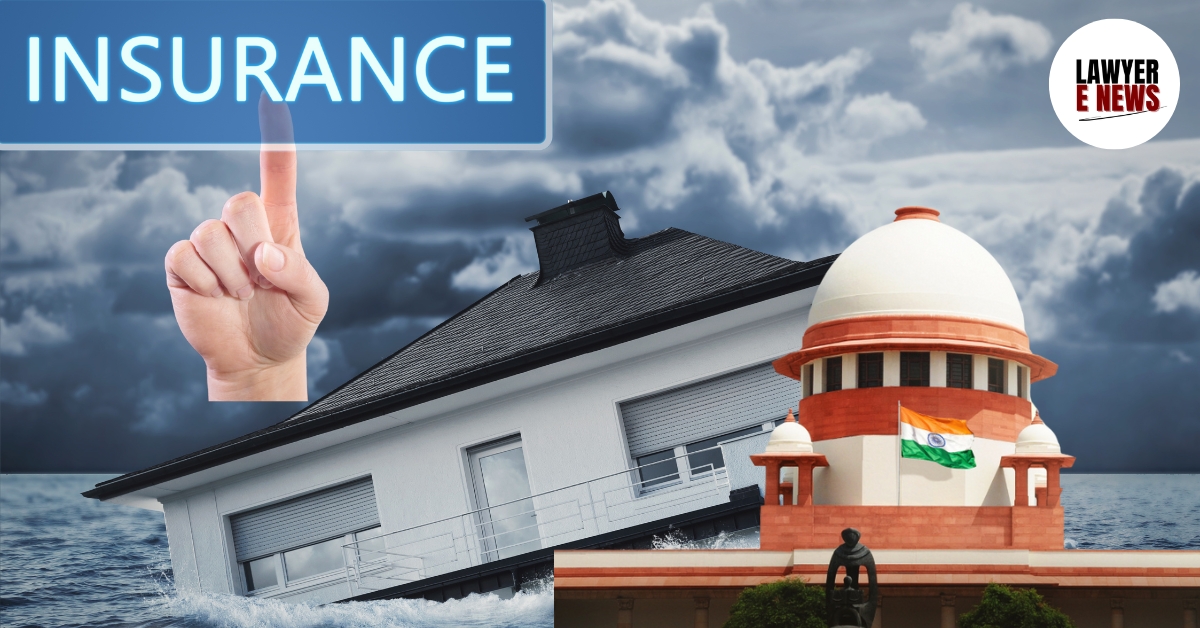-
by Admin
17 December 2025 10:13 AM



“Second Survey Arbitrary—First Report Shows Inundation Due to Rain, Not Structural Defect”, in a significant ruling for consumer rights and insurance jurisprudence, the Supreme Court of India set aside the rejection of an insurance claim and pulled up the insurer for relying on a flawed second survey report to deny rightful coverage. The Court held that the real cause of damage was heavy rainfall and basement flooding, not gradual seepage, and remanded the matter to the National Consumer Disputes Redressal Commission (NCDRC) to reassess compensation in light of its findings.
Justice Satish Chandra Sharma, writing for the Bench, declared: “The belated reassessment conducted by the Respondent is deemed arbitrary and without due basis. We find no reason to accept the second survey report dated 18.10.2016 and the same is hereby set aside.”
The appellant, Gopal Dikshit, owned a residential property in Ishwar Nagar, Delhi, which was insured under a Householder’s Policy worth ₹1.5 crores. In late August 2016, during a period of reported heavy rainfall, the property’s basement was flooded while Dikshit was out of town. Upon return, he discovered extensive damage to furniture, fittings, books, and structure. A booster pump was installed to drain the water, but damage was already done.
The insurer initially sent Surveyor Akash Chopra, whose report dated September 6, 2016, attributed the damage to flooding caused by heavy rainfall on August 25, 2016. Later, a second surveyor was appointed, and a conflicting report dated October 18, 2016, concluded that the cause was “seepage”—a peril excluded under the policy. On this basis, the insurer repudiated the claim.
When Dikshit challenged the rejection before the NCDRC, his claim was dismissed. This appeal followed.
The key issue before the Supreme Court was whether the insurer’s repudiation of the claim on the ground of “seepage” was justified, or whether the flooding due to heavy rainfall constituted a covered peril under the policy.
The Court unambiguously ruled in favour of the appellant, holding that the first survey report and two independent engineering certificates confirmed flooding as the cause of damage.
“The First Survey Report dated 06.09.2016 clearly attributes the damage to rainwater entering through the flooring following the downpour on 25.08.2016.”
It further noted: “The certificates issued by M/s International Consultants & Technocrats Pvt. Ltd. and M/s Chordia Engineering Consultancy Services confirm that the flooding, not seepage or structural failure, was the proximate cause of loss.”
On the second survey report submitted more than a month after the incident, the Court was critical:
“This abrupt departure from the earlier findings, without explanation or justification, raises serious concerns about the reliability and objectivity of the second survey.”
Rejecting the NCDRC’s reliance on the second report, the Court emphasized:
“The certificate from Unique Consulting Engineers addresses only seepage in structural elements and is silent on basement flooding—it cannot be relied upon.”
Setting aside the NCDRC’s findings and the second survey report, the Supreme Court remanded the case to the NCDRC for reassessment of compensation, directing it to consider the original survey and expert evidence regarding the flooding due to rainfall.
This ruling marks a firm stand against arbitrary insurance repudiations and reinforces the principle that survey reports must be credible, timely, and consistent. As Justice Sharma observed:
“We conclude that the damage... was not caused by any inherent structural defect or seepage, but was instead a direct consequence of the unprecedented and heavy rainfall...”
The decision is a timely reminder that consumer protection must be balanced with procedural fairness and that insurers cannot rely on selective evidence to defeat legitimate claims.
Date of Decision: May 19, 2025
